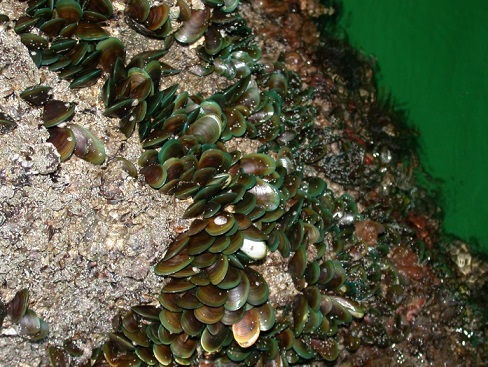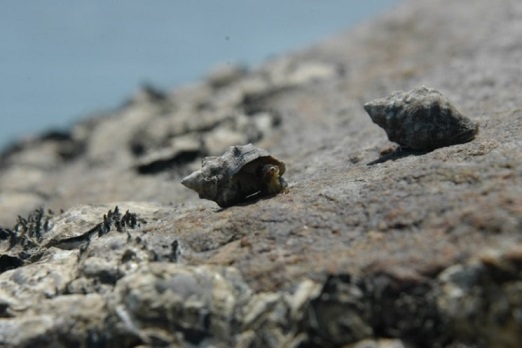|
Biological Indicator Monitoring in Hong Kong
This webpage presents the biological indicator monitoring programme initiated by the Environmental Protection Department (EPD) in 2004.
Why we need a biological indicator monitoring?
The EPD has been implementing a marine water quality monitoring programme since the mid-1980s. The programme covers over 80 physical, chemical and biological parameters (such as bacteria and Chlorophyll-a levels) of water and sediments and aims at providing information on what the pollutants are, where and at what concentrations. The total concentrations of pollutants like metals and trace organics in waters and sediments, for example, is however only indicative of their potential impacts on the biological community as these pollutants occur in different chemical forms in the environment and only parts of them are bioavailable and can be taken up by organisms. Biological indicator monitoring, therefore, could supplement information on the level of pollutants in the organisms and the potential effects of specific pollutant(s) on them.
More on biological indicators
The biological indicator monitoring programme
Background
In the last few decades, biological indicators have been used to supplement chemical and physical parameters in pollution monitoring in some countries (e.g. USA, UK, Australia and New Zealand). To be in line with overseas trend and determine the biological effects of marine pollution in Hong Kong waters, the EPD conducted a consultancy study on the “Development of Biological Indicator System for Monitoring Marine Pollution” between 2001 and 2003. The study recommended the EPD to implement a biological indicator monitoring programme in conjunction with other water quality monitoring programmes to enhance the effectiveness of water quality management. In 2004, the EPD initiated a biological indicator monitoring programme.
Objective of the programme
The objective of the biological indicator monitoring programme is to supplement the marine water quality monitoring programme with information on (1) the biological responses of indicator species with respect to changes in water quality; (2) to compare biological effects / impairments across Hong Kong waters; and (3) to assess the condition of the marine community.
Targeted species
The biological indicator monitoring programme has targeted two local marine species: (1) green mussel Perna viridis, and (2) dog whelk Reishia clavigera.
(1) Green Mussels
Green mussels (bivalves) have been widely used as a biological indicator of pollution in various monitoring programmes to measure the levels of bioavailable fractions of pollutants. The reason for this is that mussels are sessile, filter-feeding organisms, able to accumulate within their tissues many of the pollutants (e.g. heavy metals, trace organics, etc.) present in marine waters, wide spread and in general, easy to collect. The green mussel species, Perna viridis, which is widely distributed in Hong Kong waters and commonly used as food locally, is therefore selected as a biological indicator in our monitoring programme.
The general health condition of this species could be assessed by analysing the stability of lysosome (a sub-cellular membrane-bound organelle containing hydrolytic enzymes for food degradation within a cell) as toxic metals and organics chemicals (e.g. polychlorinated biphenyls (PCBs) and polycyclic aromatic hydrocarbons (PAHs)) could destabilize the lysosomal membrane in mussels. In our monitoring programme, the stability of lysosomal membrane in haemocytes of the green mussel is measured by Neutral Red assay.
In addition, the tissue trace organics levels including PCBs and PAHs; and heavy metals includes cadmium (Cd), chromium (Cr), copper (Cu), nickel (Ni), lead (Pb) and zinc (Zn) in this species are also monitored.
Our monitoring results show that there were spatial differences in the stability of lysosomal membrane (as reflected by the neutral red retention time) among the green mussels collected from different sites. Higher retention time was generally recorded in the areas of Tolo Harbour & Inner Mirs Bay (e.g. Ko Lau Wan), whereas the mussels collected from sites like Ma Wan, Sok Kwu Wan and Tsim Sha Tsui generally showed a shorter retention time of the dye.
In terms of tissue pollutant levels, our monitoring results show that there were no marked changes in the tissue levels of most heavy metals between sampling sites and surveys. The levels of PCBs and PAHs were generally higher in urban centres such as Tsim Sha Tsui (Victoria Harbour) as compared with Perna viridis collected from Pak Sha Wan and Yung Shue Wan.
The results show that the levels of Cd, Cr and Pb in the mussel Perna viridis were all below Hong Kong's recommended limits for shellfish as food (i.e., Cd: 2.0 ppm; Cr: 1.0 ppm; Pb: 6.0 ppm wet weight) [Cap. 132 Food Adulteration (Metallic Contamination) Regulations, Public Health and Municipal Services Ordinance]. The levels of Ni in Perna viridis were also well below the action limits set by the US FDA (i.e., Ni: 80 ppm wet weight) (FDA Guidance Document). Both Cu and Zn are essential elements to humans. They are much less toxic as compared with some other metals (e.g. Cd, Cr and Pb). There are no seafood safety standards (recommended seafood limits) established for Cu and Zn in Hong Kong (also hardly in any other countries). The levels of Cu and Zn recorded in mussels in Hong Kong waters were largely similar to the range of those obtained from some other countries such as Singapore. PCB contaminations in all the mussel Perna viridis analysed were well below the Mainland standard, i.e., 2.0 ppm wet weight (GB 2762-2005) for both fish and shellfish.
| No Table Header |
 |
| (A photo showing the green mussel Perna viridis) |
(2) Dog Whelk
Tributyltin (TBT) based antifouling paints were commonly used in the 60s and 70s to prevent corrosion and fouling of boats. TBT is an endocrine-disrupting chemical extremely toxic to marine life. Since the 70s, it was known that TBT was harmful to marine organisms and can induce imposex in some marine gastropods. Imposex is an abnormality in which the genital system of females develops male-like structures such as penis and vas deferens which could block the genital pore and cause reproductive failure (i.e. egg capsules cannot be laid) and premature death. Measuring the degree of imposex in marine gastropods is a sensitive and specific biological indicator of TBT contamination in the environment. Occurrence of imposex in some marine gastropods has been reported worldwide in areas with high marine traffic / activities.
Many countries have banned the use of TBT based paints on ships. In Hong Kong, all TBT containing antifouling paints are considered as pesticides and are controlled under the Pesticides Ordinance (Cap.133) administered by the Agriculture, Fisheries and Conservation Department (AFCD) and no permit has been issued by the AFCD for the local use of TBT containing antifouling paints since 2006. The "International Convention on the Control of Harmful Anti-Fouling Systems on Ships, 2001" (the Convention) was adopted by the International Maritime Organization (IMO) in 2001 to globally ban on the application of organotin compounds in antifouling paints used on ship hulls so as to protect the marine environment. The Convention entered into force internationally on September 17, 2008. The Convention has been implemented in Hong Kong by the Merchant Shipping (Control of Harmful Anti-Fouling Systems on Ships) Regulation (Cap.413N) administered by the Marine Department.
The local dog whelk, Reishia clavigera (formerly known as Thais clavigera), which is a small carnivorous gastropod feeds mainly on suspended / soluble organic matters and commonly found in rocky shores, is selected as a biological indicator of TBT pollution in our monitoring programme.
Our monitoring results show that Reishia clavigera is widely distributed and common in our local rocky shores, suggesting that the environmental TBT level was not particularly high and has not exerted any catastrophic impact on the population of this species. In general, the imposex levels in Reishia clavigera were higher in areas like Tsing Yi, Butterfly Beach and Big Wave Bay where shipping / boating activities are intensive, while the populations in Clear Water Bay and Sai Kung generally showed a lower degree of imposex. Nevertheless, as the use TBT is banned, it is anticipated that the effect of TBT would gradually subside.
| No Table Header |
 |
| (A photo showing the dog whelk Reishia clavigera) |
|